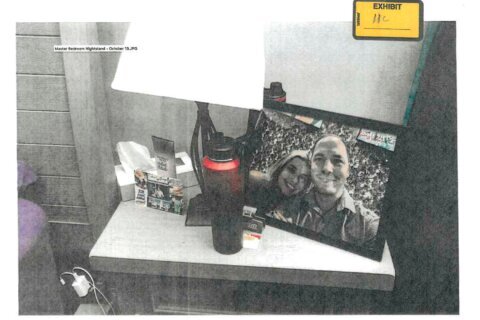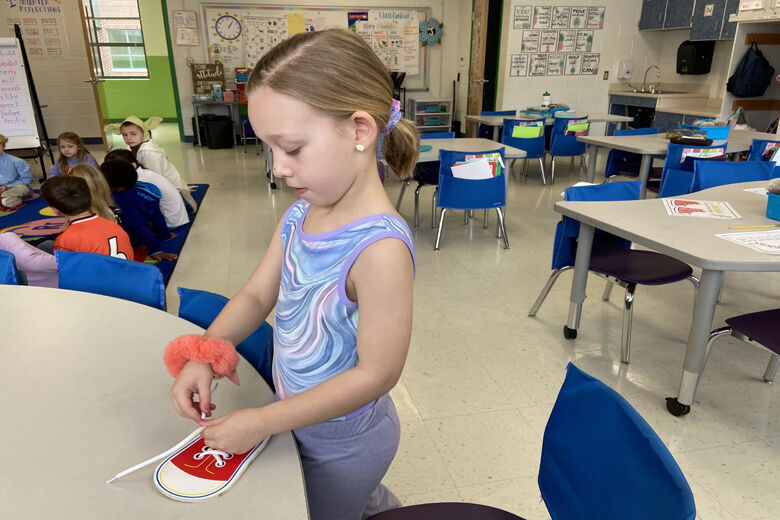
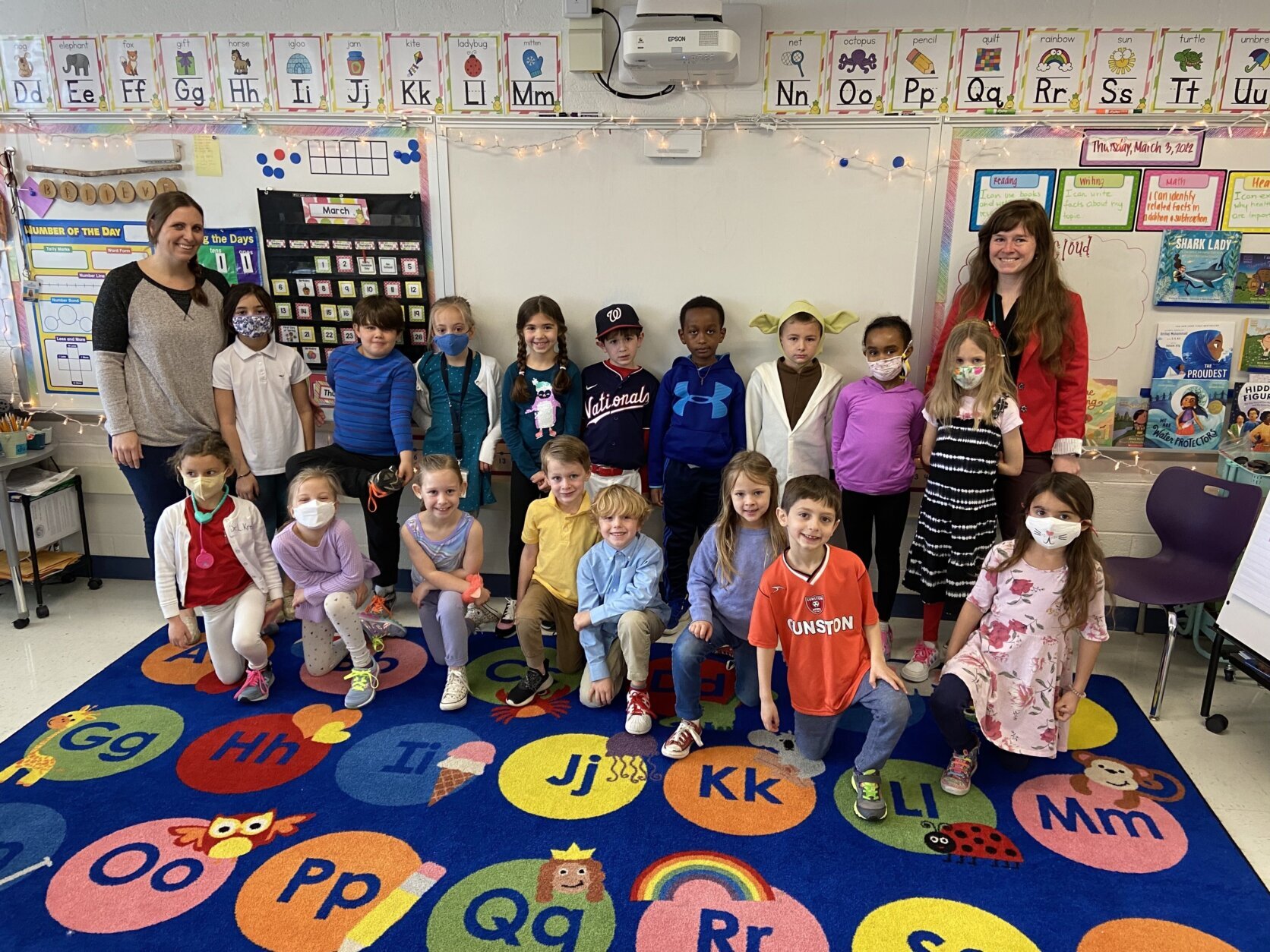
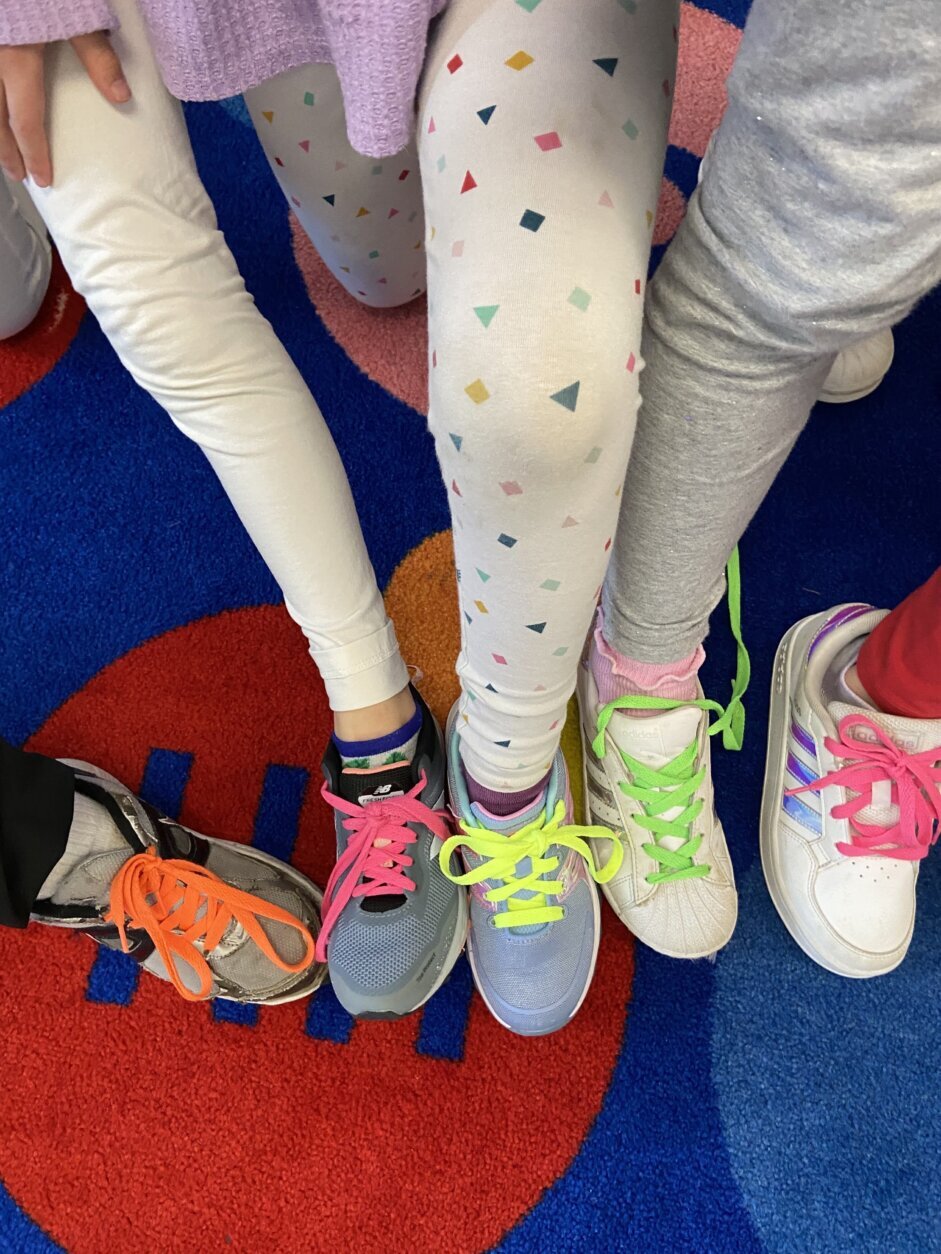


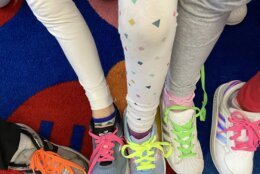
In the days leading up to winter break, first-grade teacher Christine Jarboe and the rest of the first-grade team at Stratford Landing Elementary School noticed that they were asked to tie more shoes than usual during recess.
In the past, Jarboe said, she would ask students at the Fairfax County, Virginia, school to attempt to tie their shoes to evaluate their progress. Before the pandemic, several students in a class would be able to do it. But this year, a majority of Jarboe’s 20 first-graders didn’t even know where to start.
Hoping to accelerate the learning curve, Jarboe launched the shoe-tying challenge, during which students get tested weekly and are rewarded with neon shoelaces when they are able to tie a knot. Since the pandemic forced a temporary pivot to virtual learning, Jarboe said, students have faced some challenges using “fine motor skills.”
“It came out of just a necessity. Almost no one really knew how to tie their shoes on the playground at recess, at PE, walking down the hallway,” Jarboe said. “It was more a safety thing — if you can’t tie your shoes, what’s going to happen?”
When the challenge launched after winter break, Jarboe told parents in weekly update notes that students would be urged to practice at home and receive class time to perfect their skills. Jarboe bought wooden shoes for students to use in anticipation of the weekly test.
Each Friday, students get the opportunity to demonstrate their shoe-tying abilities. On March 1, the day of the first test, only one student could tie a knot. The second week, it was five students. By the third test, it was eight. Now, Jarboe only has four students who can’t tie the laces.
Once successful, students receive a pair of neon shoelaces, which many students have already added to their shoes. Jarboe said the goal is for every student to be able to tie laces before the end of the school year. The challenge has gained momentum across the school’s first grade classrooms.
“[Tying shoes] is one of those natural things that happen,” Jarboe said. “You don’t think about it. You don’t think about how to teach it.”
Jarboe said the challenge has been well-received among parents, and some students have told her they planned to go home and practice all weekend.
Porter, a student in Jarboe’s class, said he practiced the skill over two weekends. He said he now enjoys tying his shoes, a pair of black Adidas running shoes with black and white laces.
Another student said her dad showed her how to tie shoes and that it only took two days to learn. She’s now helping her classmates, too.
“When [the first student] got it, the whole class was like, ‘We can do this,'” Jarboe said. “It’s been almost like a positive peer pressure.”
Since returning to in-person learning, Jarboe said, she has emphasized things like handwriting, forming letters, cutting and tracing along lines — skills less utilized during the pandemic. But the shoe-tying challenge was convenient, she said, because the return to classrooms meant “there was no friend to tie a shoe because nobody knew how to do it.”
With the challenge underway, more students have ditched Velcro and slip-on shoes for some with laces, Jarboe said. Soon, she anticipates they’ll all be boasting neon shoelaces.
“It definitely took off faster than I thought,” Jarboe said.




